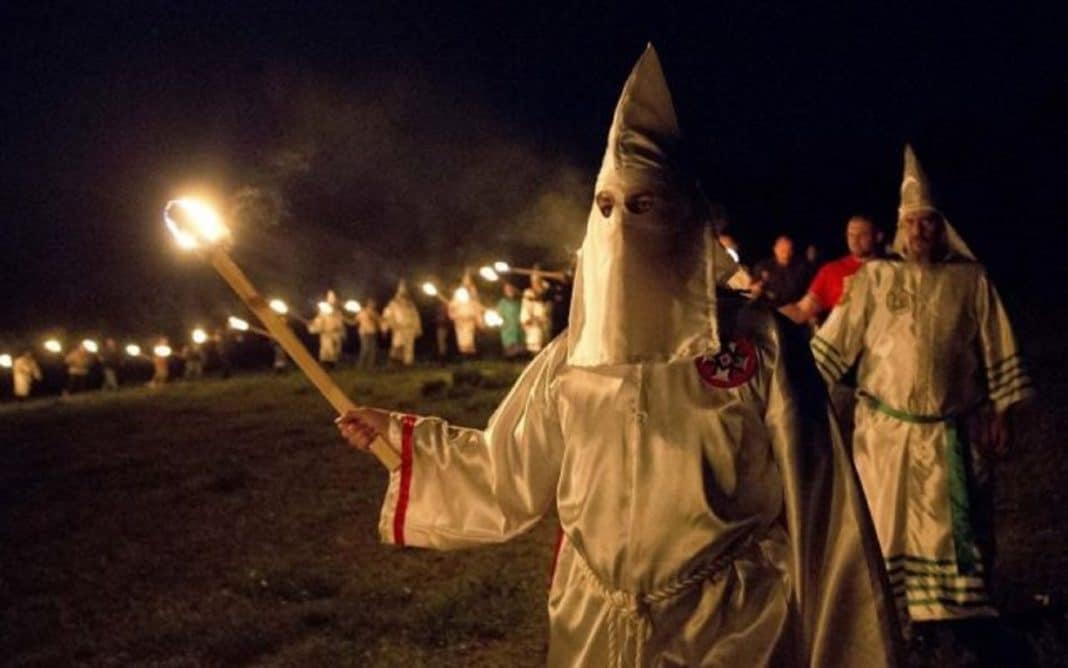
As the U.S. experiences a drop in violent crime, rural areas are witnessing the highest level of violent crime in ten years. The data contradict the public perceptions that urban areas are the most dangerous places in the country. (AP Photo/John Bazemore)
While much attention is focused on urban crime in America, overall crime in the U.S. has fallen as rates in rural areas have soared in recent years. This reality raises questions as to why this is happening, and why rural white violence is not receiving more attention.
According to Pew Research, violent crime in the United States has fallen sharply in the past 25 years. For the first time in a decade, violent crime in rural areas has surpassed the national average, as the website Governing reported. The reasons for this state of affairs are severalfold: Although all rural areas are not poor, poverty has increased, which has led to an increase in crime. Employment has fallen in the countryside as farming has consolidated and manufacturing jobs have left. Further, the opioid crisis , as well as the methamphetamine epidemic,continue to make their presence known in small towns as a driver of crime. Finally, there are fewer law enforcement resources in the country due to shrinking tax bases, with fewer jail cells, and sheriff’s deputies required to cover significantly larger patrol areas than their urban counterparts. This rural reality provides an opening for criminal activity such as drug dealing to thrive.
These findings from Governing come on the heels of another recent study revealing that rural jails have the highest rate of pretrial detention in the country. A 2013 study from the Annals of Emergency Medicine concluded that large cities are among the safest places in which to live. The study found the risk of injury death, including both accidents and violent crime, is more than 20 percent greater in the country than in big cities, rebutting the common perception that urban areas are inherently more dangerous than other regions.
And as a clear example of this new trend in rural incarceration, the white, rural, politically conservative enclave of Dearborn County, Indiana, sends more people to prison per capita than any other county in the nation, and more than San Francisco and Durham, North Carolina, combined. This reflects the trend in which residents of small counties are 50 percent more likely to go to prison than those who live in larger counties. Rural jurisdictions are also more resistant to criminal justice reform and lighter sentences, and cities have more resources to provide drug treatment as an alternative to prison.
The emergence of opioid addiction among white Americans has resulted in a push to treat white drug use as a public health issue, at least rhetorically, in contrast to the war on drugs that has been waged for decades in Black communities and has fueled mass incarceration and police practices such as racial profiling and stop and frisk.
Nevertheless, as Black and Latino rates of incarceration have fallen, the white rate has increased, although the racial disparities remain. While the Black community benefited from community-based initiatives and organizations and shifts in crack cocaine sentencing, whites have experienced widespread poverty since the Great Recession. Black people always were hit hardest in economic downturns and are no strangers to poverty and deprivation. White communities not used to hard times are experiencing deteriorating life prospects as the coal mines and auto factories shutter, including more drug and alcohol abuse, and heightened mortality and suicides.
For the past two years, life expectancy has fallen due to addiction, despair and suicide, especially among middle-age white Americans and people living in rural communities. Although the United States once enjoyed the highest life expectancy in the world, it has fallen behind 35 other industrialized countries and has poorer health than many other nations. Young white adults between ages 25 and 34 are the first generation since the Vietnam War to experience higher death rates in early adulthood than the generation before, contributing to increased white mortality amid falling death rates for Black and Latino Americans.
Further, white people are the angriest in America, as a 2016 poll revealed, with that sentiment attributed to a feeling that they have lost the “American dream” and are worse off and unable to get ahead.
On the other hand, Black people — who have had hundreds of years of slavery, segregation and racial discrimination to develop coping mechanisms — “might not expect that their income, standard of living and social status are destined to steadily improve. They don’t have the same confidence that if they work hard, they will surely get ahead,” as Fareed Zakaria noted in the Washington Post. That whites — particularly non–college–educated whites — are in despair, overdosing and drinking themselves to death, even as they fare better than Black people, is attributed to what Johns Hopkins sociologist Andrew J. Cherlin chalks up to the reference group theory. Under this theory, people behave based on how they fare with respect to their parents. Therefore, white people will feel as if they are worse off because they don’t have as much economically as the previous generation of white folk, although white people control the society and dominate people of color economically.
Rural whites, a solid bloc of Trump’s voting base, are more concerned about their children’s economic future, the lack of jobs, and immigrant workers taking jobs away from American workers than other whites, according to Pew Research. White people are more likely to own guns than Black and Latino people, while non–college–educated white men — 72 percent of whom voted for Trump — are particularly more likely to own guns. NRA propaganda fuels the anger, paranoia and racial- and gender-based resentment of this segment of the population. This takes place in an environment in which Trump incites violence and scapegoats people of color in his rallies. In this environment, some white men, including armed Trump supporters, turn their anger into violence, and with a fear of being replaced and falling behind, they stockpile weapons, join violent hate groups and murder people. White men fuel racial violence, and also become mass shooters more than any other group. White domestic terrorists commit the most acts of terror in the United States, kill the most police officers, and infiltrate law enforcement.
White people blaming Black people and other groups for their problems has been a highlight of the Trump phenomenon, yet their voting decisions will only perpetuate and exacerbate the underlying downward spiral that fuels white rage, white despair and white violence. According to a forthcoming article in the American Economic Review, racism rather than economic self-interest explains the entire defection of Southern white conservatives from the Democratic Party to the Republican Party between 1958 and 1980. Today, whites are economically insecure and stressed over the darkening of America and the attendant prospect of the loss of preferred sociopolitical status that white skin has provided. Even a modicum of Black progress is met with white backlash and resistance, and a preference for authoritarian rule rather than a democracy that grants equality and rights to all.
Trump’s global trade war, with threats to impose tariffs on steel, aluminum and other imports, and the retaliatory tariffs from China and Europe will cause pain through job losses in the red states that support him. In retaliation, China will target soybean and pork products. Eight of the top ten exporting states for both soybeans and pork are red states, with Iowa who sending $14.6 billion in soybeans to China, or one third of their crop and more than the rest of the world combined. The administration’s failure to fight climate change will hurt Southern states the most and deal a severe economic blow to the region, according to the Federal Reserve Bank of Richmond. Even the planned change to the 2020 census reinstituting a citizenship question would lead to an undercount that could harm red states as much or more than blue states, with a possible federal funding cut for 14 red states amounting to 181 electoral votes, as opposed to two blue states and the District of Columbia accounting for a mere 63 electoral votes.
Trump voters are already feeling the pain brought on by these policies, yet his supporters have not abandoned him, and it remains to be seen if they ever will. If the increased violence of rural America is due to hard economic times and a feeling of despair, their support for politicians and policies who will exacerbate their pain is an example of a self-inflicted wound.


